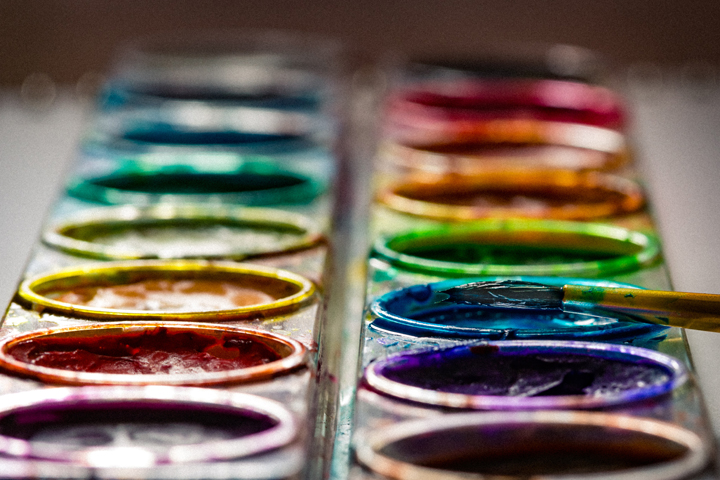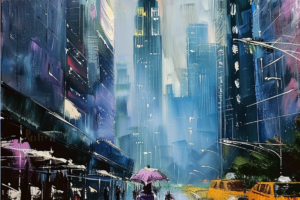Tempera paint is an inexpensive, versatile art and craft medium and is a water-soluble, non-toxic, easy-to-use paint available in many bright colors. Any mess can be cleaned up with soap and water.
This paint is used widely for children’s art classes in pre-schools and primary schools. Professional artists sometimes use quality brands of Tempera paint.
Tempera paint is made by mixing water, non-toxic pigments, and calcium carbonate (chalk) with cellulose or cornstarch binder. It is not permanent unless fixed with a glaze. Egg-tempera, made from high-quality pigments and egg yolk, is a fine-art medium historically used by Renaissance artists.
Tempera paint is an uncomplicated way of introducing children to paint. Because it is not toxic, it is ideal for painting with fingers or making handprints on paper.
It can be used on various surfaces, and it dries fast compared to other types of paint. Although it is an entry-level art material, it can be used creatively to get different effects.
Understanding What Tempera Paint Is
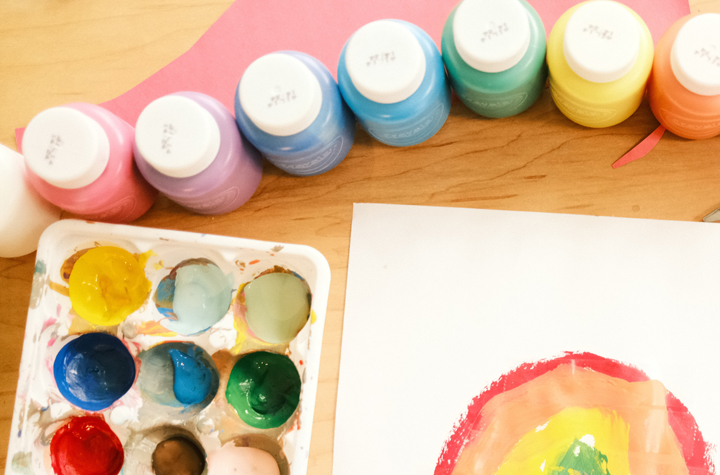
Tempera paint gets its name from ‘temperare,’ the Latin word for ‘mixing.’ Powdered pigments are combined with water, preservatives, and food-based binding agents to produce a smooth, thin paint with a creamy feel.
Tempera paintings have a matte look when dry. It is a less permanent medium than acrylic paint and will fade over time.
Tempera powder paint has a long history that started in Ancient Egypt. During the Italian Renaissance (14-17th century), artists like Michelangelo and Leonardo da Vinci painted with egg-tempera on wooden panels and plastered walls.
The historical Tempera paints were made with organic materials like eggs, honey, milk, and pigments derived from vegetables and ground rocks and sticks.
Commercial Tempera paints available today contain non-toxic synthetic ingredients. Tempera paints can be bought as pre-mixed, liquid paints or as a powder that has to be mixed with water.
There are various recipes for making Tempera paint with food colorants, colored chalk ground up, and egg yolks.
How Do You Use Tempera Paint
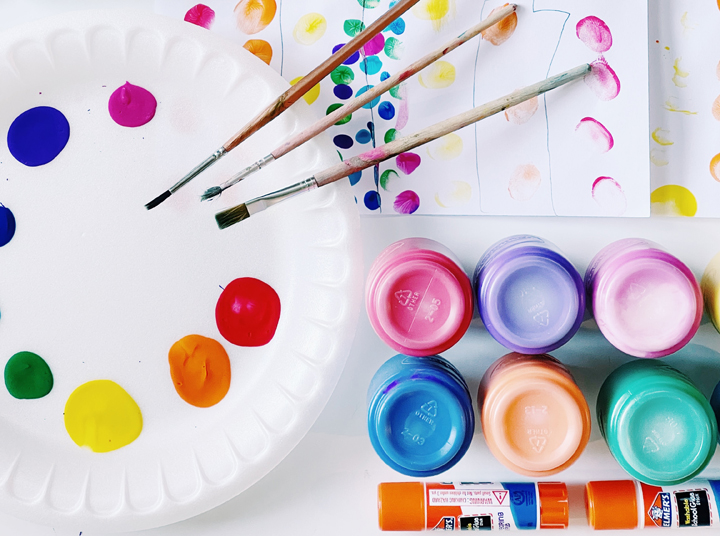
Tempera paint is a straightforward painting medium that adheres well to any paper or cardboard surface. It is water-based, so paper thicker than regular office printing paper works best. To start your art project, you need the following items:
- Two cups of water for rinsing the brush in between using different colors
- An old plate for mixing colors
- Liquid Tempera paint or powdered Tempera paint that requires mixing with water
- A pencil if you want to mark out your design before painting
- Paper or cardboard
- Different sizes of soft paintbrushes. An old toothbrush works well for splattering effects
- Use a large sheet of paper or plastic to cover the working surface to avoid a mess. Spilling onto clothes or tables is no problem as Tempera paint is washable. Still, less time cleaning means more time for painting
Easy Steps For Making Art With Tempera Paint
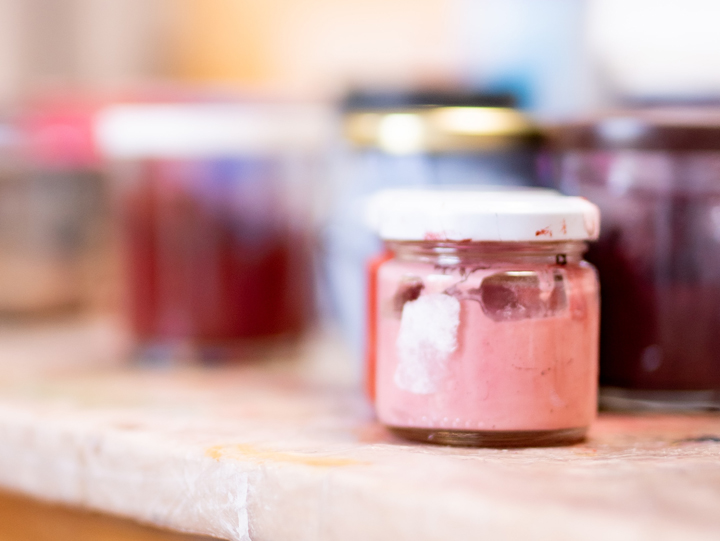
Make a light sketch in pencil or just have your idea in mind and choose a color to start with. Light colors should be painted first as dark colors can be painted over light ones, but not the other way around.
It is best to allow the bottom layers to dry first before painting over them. Wet onto wet paint can also be experimented with. Here are some easy steps to follow.
- Squeeze a blob of paint onto the plate. You can choose two or three colors to start with, but keep them separate on the plate
- Dip the brush into the water and tap on the cup’s rim to remove extra wetness
- Now swirl the brush into the paint and make your marks on the paper
- Always rinse the brush thoroughly before putting it into the next color
- You can mix two colors on the plate to create different shades. Mixing yellow and blue will make green. Experiment, but beware that the paint will become a dull brown if you mix too many colors
- Experiment with making a wax crayon drawing first and then painting over it
- When you are satisfied with your painting, allow it to dry. The time will vary depending on how thick the paint is applied and how absorbent the paper is. Roughly ten to fifteen minutes should be enough. Take this time to make sure all paint bottle lids are securely closed. Wash the brushes with dishwashing soap and water
- To make the painting more durable, apply an acrylic varnish or glaze over it
- If you made a wonderful painting, have it framed and do not hang it in bright sunlight, as the colors will fade
What Surfaces Can Tempera Paint Be Used On
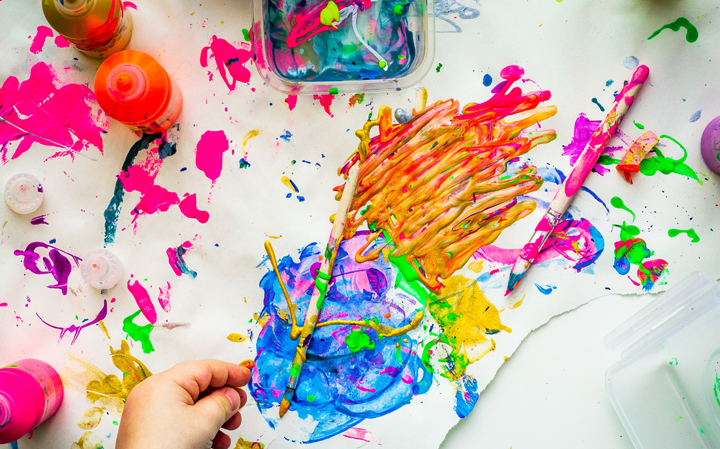
Tempera paint works well on most paper products like cardboard or paper maché. Watercolor paper is designed for water-medium paint and will not pull skew when it gets wet, like cheaper paper.
Surfaces that will not work for Tempera paint are fabric, stretched canvas, or metal. Other surfaces that are worth trying include the following.
- Sturdy canvas boards can be used, but canvas stretched over a frame is unsuitable. The paint will crack when it dries on an unsupported canvas.
- Painting on wood that stays indoors can be done, but it will not be long-lasting unless covered with a varnish. The varnish might change the colors, so always do a test first.
- Glass can be painted for fun and then washed off again. It will hold for a while but is not a permanent solution.
Comparing Tempera Paint And Acrylic Paint
Tempera and acrylic paints are water-soluble mediums available in various colors. Acrylic paint is more expensive and permanent than Tempera paint. Cheaper brands of acrylic paint are the next step if you want to move beyond Tempera paint.
Art students and artists prefer quality brands of Fine-art acrylic paint. Acrylic paint offers more blending and surface texture options than Tempera paint.
Below is a quick comparison of the characteristics of Tempera and acrylic paints.
| Characteristics | Tempera Paint | Acrylic paint |
| Toxicity | Non-toxic | Potentially toxic, depending on the brand |
| Consistency | Thin and creamy | Thick |
| Lightfastness | Not good | Excellent |
| Permanence | Not permanent | Permanent |
| Shelf-life | 2-5 years | 10 – 15 years |
| Flexibility | Not flexible. Thick layers will crack. | Flexible. Thick paint can be layered with success. |
| Drying time | 10-15 minutes | 20 – 60 minutes |
| Surface finish | Matte | Matte or gloss, plastic feel |
| Clean brushes with | Easily with water and soap | More complex, use water and soap |
| Surfaces to paint on | Paper, cardboard, paper-maché, canvas board, glass | Paper, cardboard, canvas, wood, ceramic, metal, fabric |
| Blending & Color mixing | Limited color mixing | Good mixing and blending results |
| Texturizing | Not suitable | Modeling pastes & gels are available |
| Color options | Flat, opaque colors only | Translucent & transparent options |
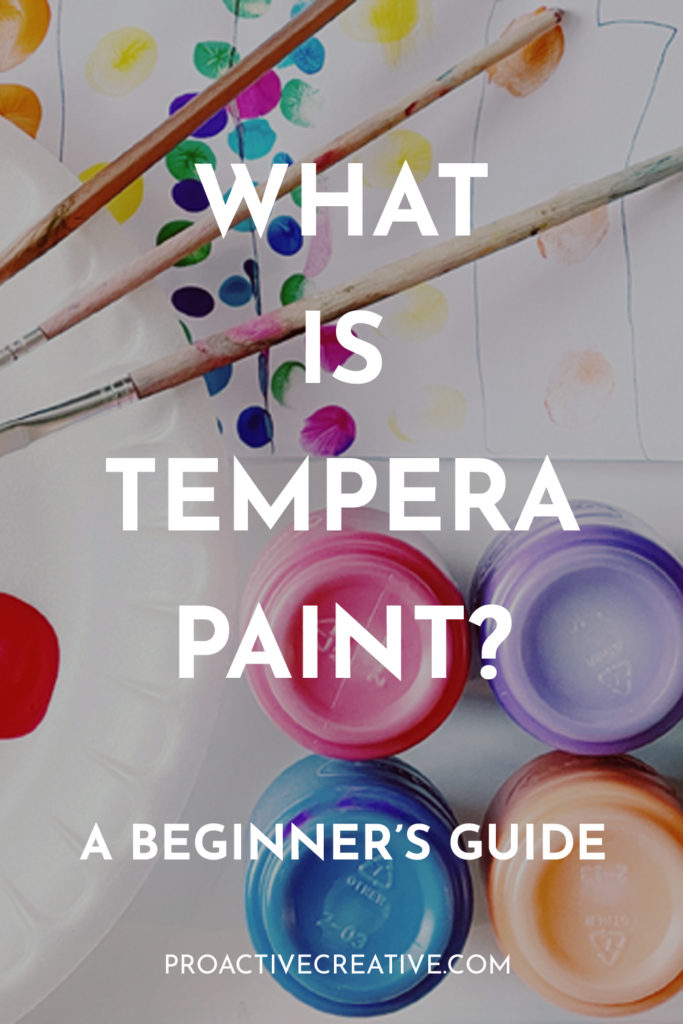
Conclusion
Tempera paint is a vibrant, safe, and inexpensive medium for introducing painting to children. It is made of non-toxic ingredients and can easily be washed from most surfaces.
Children can relax and have fun with Tempera paint without restraint. It is not long-lasting and will fade and crack over time unless treated with specialty glazes and framed behind glass.
Let me know if you have any questions about tempera paint. In the meantime, follow Proactive Creative on Pinterest for more tips, tutorials, and reviews!

